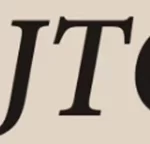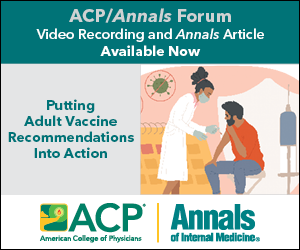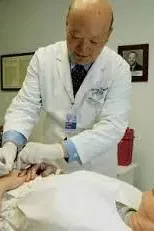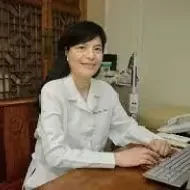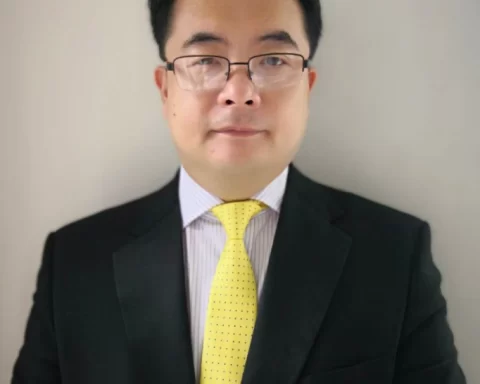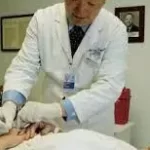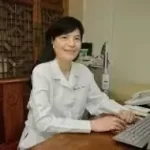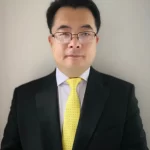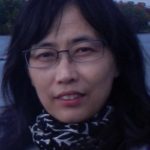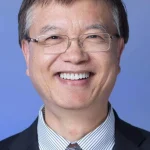Zhenzhen Zhang
Abstract:Methods to regulate the spirit in TCM have similar effects to psychological suggestion, persuasive language, and religious prayers; the outcomes of all of these practices can be attributed to the placebo effect. Modern research has revealed that the placebo effect not only impacts the mind, but also involves changes in corresponding physiological systems. Findings such as the enhancement of the functions of corresponding regions of the cerebral cortex or changes in biochemical indicators prove that the placebo effect has a physical basis. Since ancient times, TCM has emphasized regulation and treatment of the spirit, and has prioritized the impact of the mind on diseases of the human body, including the positive impacts that modern medicine refers to as placebo effects and the negative impacts known as nocebo effects. This paper provides examples of various TCM methods to regulate the spirit, with the goal of reminding fellow TCM practitioners to consciously and actively utilize these methods to maximize placebo effects while avoiding nocebo effects. In combination with the non-placebo effects of acupuncture and Chinese herbal medicine, these methods can improve clinical treatment outcomes.
More than ten years ago, a friend who practiced Western medicine candidly remarked that the therapeutic effects of TCM and acupuncture are actually psychological effects; they work if you believe in them. I debated with her for a while on this topic, thinking that she was narrow-minded and short-sighted. I brought up many research findings, trying to persuade her that the effectiveness of TCM and acupuncture was not just due to psychological effects. At last, she begrudgingly said that the studies were not double-blind and they didn’t add up to anything. Over the past few decades, in the rush to modernize TCM, TCM practitioners such as myself have bent over backwards to carry out all kinds of experiments using modern scientific research methods, equipment, and measurements to prove the scientific validity of TCM and refute claims that its effects are psychological. If we were to see some Western research that concluded that TCM treatment outcomes were simply placebo effects, we would habitually or reflexively retort that this was because they didn’t understand TCM, their study design was unreasonable, they didn’t follow TCM methods when carrying out their research, and so on. People often regard “psychological effects” and “placebo effects” as derogatory terms that belittle the value and deny the effectiveness of TCM and acupuncture.
The therapeutic outcomes of TCM and acupuncture are not purely placebo effects.
A growing body of research has proven that the effectiveness of acupuncture is realized through changes to physiological functions in the human body. For instance, in 2017, researchers performed a controlled study with 80 carpal tunnel syndrome patients that compared verum and sham acupuncture treatments. The results showed that after treatment, patients in the verumacupuncturegroup had noticeable changes in brain activity in the cerebral cortex regions that map to the second and third fingers, which corresponded to improvements in the patients’ symptoms and enhanced median nerve conductivity. The sham acupuncture group also saw improvements in symptoms, but did not have the corresponding changes in cerebral cortex activity. The researchers concluded that verum acupuncture enhanced the patients’ neurophysiology and in this regard it was superior to sham acupuncture (the placebo group). This study tells us that the clinical treatment outcomes of acupuncture include placebo effects (the sham acupuncture group also improved) as well as non-placebo effects (along with improved symptoms, cerebral cortex activity and median nerve conductivity were also enhanced; these changes in physiological function are not placebo effects)[1]. There are many other similar acupuncture studies, too many to list here.
Placebo effects are everywhere
“Placebo” is a Latin word meaning “I shall please”. Modern medicine uses placebos to study whether medical interventions or methods are truly effective when the influence of psychological effects has been ruled out. However, the placebo effect does not only exist in the medical field; practices that have persisted for over a thousand years, such as suggestion therapy, psychotherapy, religious prayer, and the ancient Chinese zhuyou prayer ritual, all share similarities with the placebo effect. They all can alleviate illness and pain to varying degrees, so regardless of how history proceeds and how science develops, these methods will not disappear. A patient with depression once told me that acupuncture enabled her to work and live like a normal person, and as a result she no longer wrestled with the question of whether to take antidepressant medication. Although her doctor once told her that acupuncture was just a placebo, she said that she didn’t care whether it was a placebo; as long as it could free her from the suffering of depression, it was an excellent treatment, and she continued to get acupuncture treatments for over ten years. She said if she had not gotten acupuncture treatments, she would have had to take antidepressant medication for her whole life.
Previously, most people believed that the effectiveness of medications was due to the fact that they altered our physiological and pathological mechanisms. By contrast, placebos were sugar pills or stimuli that had no effect on illness or the human body. Therefore, the placebo effect was equivalent to no effect. But recently, a placebo study carried out in Australia in 2021 revealed something interesting. Researchers connected heated electrodes to the skin of volunteers’ arms and at the same time applied Vaseline. One group of volunteers was informed that the ointment applied was an analgesic cream that could relieve the pain from the electrodes. Among these subjects, it turned out that one-third of them reported a reduction in pain. Another group of subjects was informed that the ointment was a pain-increasing cream that would amplify the severity of their pain; over half of this group felt more pain (the nocebo effect). This experiment tells us that one-third of the subjects responded to a placebo consisting of verbal cues and half of them experienced the nocebo effect[2]. The nocebo effect is a negative outcome resulting from an adverse or negative cue.
In another placebo study on IBS, researchers explicitly told volunteers with IBS that what they were taking was a sugar pill that did not contain medication, but their bodies would respond to the sugar pill. If they had a positive attitude it would be more effective, but this was not necessary. It was very important to take the pills on schedule. After three weeks, the result was that the symptom improvement rate in this group of volunteers reached 59%. In the other, non-intervention group serving as the control, the symptom improvement rate was 35%. There was a statistically significant difference between the two.[3]While the subjects clearly knew they were taking a placebo, persuasive language was still effective.
Placebo mechanism
Researchers have discovered that the placebo effect occurs due to changes in the brain. In the words of Harvard University placebo research expert Ted Kaptchuk, “The placebo effect is more than positive thinking, believing a treatment or procedure will work. It’s about creating a stronger connection between the brain and body and how they work together. “[4]Meanwhile, Robert Shmerling, another Harvard professor, said, “The placebo effect is for real and the benefits of a placebo treatment aren’t just ‘all in your head’. Measurable physiological changes can be observed in those taking a placebo, similar to those observed among people taking effective medications. In particular, blood pressure, heart rate, and various blood test results have been shown to change among subsets of research subjects who responded to a placebo. “[5]
For example, in a placebo study on pain, researchers performed functional MRI brain scans on patients with chronic pain due to knee osteoarthritis, and then repeated the brain scans on the subjects after administering a placebo. The results showed that those who felt a decrease in pain had increased activity in the medial frontal gyrus region of the brain, a region that makes up roughly one-third of the frontal lobe. The researchers believe that while the mechanisms behind the impact of placebos are not yet fully clear, they involve complex neurobiological reactions, including increased secretion of neurotransmitters such as endorphins and dopamine, and are related to increased activity in brain regions associated with emotional responses and self-awareness.[4]
The well-known classical Chinese saying “to quench thirst by looking at plums” provides evidence for the existence of ancient placebos. A New Account of the Tales of the World, written by Liu Yiqing, states: “While on a military campaign, Wu of Wei [Cao Cao] could not find the route to a water supply and his troops were thirsty, so he announced, “Ahead lies a large grove of plum trees loaded with fruit; they are sweet and sour, and can quench thirst.’When the soldiers heard this, their mouths all started to water. ” This record describes a time when Cao Cao was leading his troops to battle and could not find a source of water along the way. His generals and soldiers were thirsty and tired, so Cao Cao shouted to everyone that there was a grove of plum trees ahead full of luscious sweet-and-sour fruit that could alleviate their thirst. Upon hearing this, the troops all started to salivate. They bravely moved forward and fought vigorously. In the end, Cao Cao successfully defeated the enemy. Historical texts describe Cao Cao as deceitful, but we can see that he successfully applied positive psychological expectations to cause changes in people’s physiology (their mouths started to secrete saliva so they were no longer parched and thirsty). This also proves that cues and persuasive language can indeed trigger changes in physiological functions.
Based on what has been discussed above, we must acknowledge and accept that acupuncture treatment has its own unique mechanisms of action. While treatment effects are achieved via non-placebo pathways, the placebo effect inevitably plays a role to some degree. In other words, with any treatment, it is impossible to rule out psychological effects or the placebo effect.
For clinical practitioners of acupuncture, it is necessary to consider combining the true therapeutic effects of acupuncture with the placebo effect to the greatest extent possible in order to maximize the impact of the treatment. At the same time, one must avoid the nocebo effect, which, as previously mentioned, is the opposite of the placebo effect. If we understand placebo effects as positive cues that produce positive outcomes, then nocebo effects are negative cues that produce negative outcomes. If patients hear that acupuncture is painful, then when they get acupuncture they will be extremely nervous and feel as if the stimulus from every needle is indeed very painful. This is the nocebo effect. Similarly, in the aforementioned Vaseline experiment, among those who were told that the ointment would increase their pain, over half of the volunteers truly did feel that their pain got worse.
The TCM spirit, the brain, and placebos
We can easily see that all forms of placebo and nocebo, such as language and visual cues like rumors, instructions, and prayers, exert their effects through the brain. The brain is governed by what we in TCM call the “spirit”. According to TCM, essence, qi, and spirit are the basis for the normal physiological functions of the human body. The activities of the brain and spirit are directing and influencing the various activities in our bodies. From the moment a patient walks into the clinic until they leave, the mental activities and behavior of the patient and practitioner are constantly being directed by the brain and spirit.
There are many descriptions and definitions of the spirit in TCM; here we confine ourselves to the mind, consciousness, and thought as referred to by the phrase “the brain is the mansion of the original spirit”, which comes from Li Shizhen’s Compendium of Materia Medica. This includes some of the functions that TCM attributes to the Heart as discussed in Nei Jing,which states that “the heart is the sovereign of all organs and is the source of spirit light”, “when the heart remembers something, this is called reflection; where reflections are stored is called the will”. To put it simply, the spirit in TCM encompasses all the mental activities discussed in modern medicine.
Below, I have attempted to describe how to amplify the placebo effect in a clinical context by regulating the spirit and thereby positively activating the spirit in the brain, while simultaneously reducing the negative activity of the spirit, also known as the nocebo effect.
Regulating the spirit in treatment
1. Using spirit in intakes: Chapter eight of Ling Shu, entitled “The Spirit as Foundation”, states that “this is why those who use needles must observe the patient’s condition in order to know if their essence, spirit, ethereal soul, and corporeal soul are present or have been lost”. This means that when in clinical practice, we must observe the patient’s spirit to see if they exhibit spiritedness (eyes and face are bright and lustrous), diminished spirit (apathetic expression and dull eyes), or spiritlessness (absentminded, inappropriate responses to questions). We can understand the patient’s mental state by observing their eyes and facial expressions. At the same time, we must listen carefully to the patient’s narrative and inquire about the details of their symptoms, giving the patient the impression that our spirit is focused only on them. Every one of us has experienced going to the doctor: after a long wait, the doctor only spends ten minutes with you and then sends you on your way. This kind of experience makes patients feel that the doctor was not focused on listening to what they said. They may feel that since the doctor’s spirit was not present and he did not sincerely address their illness, the prescription he wrote may not be effective. This state of mind may cause patients to experience the nocebo effect.
2. Using the spirit in acupuncture: Chapter 25 of Su Wen, entitled “On the Preservation of Life and the Body”, says that “true acupuncture requires one to first treat the spirit”. The first chapter of Ling Shu, “Nine Needles and Twelve Sources”, also reminds us that “the spirit is in the minute details; focus the senses upon that which is diseased”. This means that the most important and fundamental part of acupuncture treatment is to treat the spirit, to regulate the patient’s mental state. We should focus on the patient’s spirit and not miss a single detail.
To this end, I frequently use spirit-calming points; many years of clinical experience tell us that no matter what disease a patient may have, there are always mental factors involved. Mental stress may cause physical discomfort, such as depression accompanied by cervical pain. Or perhaps aphysical illness causes mental distress, such as a hip joint replacement that leads to insomnia and anxiety. When I treat patients, if I am needling the front of the body, in nine out of ten cases I use points that treat the spirit such as Yintang, Shenting [GV-24], and the Four Gates. If I am needling the back, I often use Dazhui [GV-14] and the back transport points for the heart, liver, and spleen to regulate the spirit.
Before inserting the needle, I use my pressing hand to gently palpate the point, silently focusing both my own and the patient’s spirit on that spot. In chapter 67 of Ling Shu, entitled “Application of Needles”, it is said that “their spirit is easily excited and their qi easily moves”. If the spirits of both practitioner and patient are wandering and unsettled, the qi will not stay below the needle. Chapter 54 of Su Wen, “Explanation of Needles”, states that “it is necessary to keep one’s spirit upright, observe the patient’s eyes and control their spirit; this makes the qi circulate more easily”. Therefore, one must guide the patient’s spirit in order for the qi obtained by needling to flow smoothly. At this time, insert the needle quickly and the discomfort caused by needling will soon disappear. For important points, explain to the patient what effects the point will have on them at the same time as you stimulate the needle. Persuasive language will activate the patient’s positive expectations; this not only helps to reassure the patient, but can also produce better outcomes. What you say should be short and simple; you should not be overly talkative or flaunt your knowledge, or else what you say may backfire. Of course, competency in essential acupuncture skills like point prescriptions, needling, and obtaining qi are the most important factors affecting treatment outcomes; one cannot put the cart before the horse.
3. Using the spirit when prescribing herbal formulas: For the same reasons we choose “spirit” points in acupuncture, we can also use medicinals that regulate the “spirit” to treat patterns like liver depression, qi depression, dual vacuity of heart and spleen, noninteraction of heart and kidney, and spleen-stomach disharmony. Medicinals such as bupleurum (chái hú), white peony (bái sháo), dragon bone (lóng gǔ), mother-of-pearl (zhēn zhū mǔ), medicated leaven (shén qǔ), root poria (fú shén), spiny jujube kernel (suān zǎo rén), biota seed (bǎi zǐ rén), polygala (yuǎn zhì), silk tree bark (hé huān pí), and flowery knotweed stem (yè jiāo téng) can often be used to good effect.
Finally, it is worth mentioning that some research reports have shown that the therapeutic effects of acupuncture are not placebo effects. The effects of acupuncture were inversely correlated with patients’ expectations; that is to say, patients with higher expectations had worse treatment outcomes. There was a positive correlation between therapeutic effects and the patient-provider relationship.[6]The results of this study serve as a warning for us not to overly exaggerate the effectiveness of acupuncture and cause patients to expect too much. At the same time, this study also tells us that establishing a positive patient-provider relationship can help enhance treatment outcomes.
In summary
this paper uses modern medical placebo research findings to rediscover and highlight the importance of the placebo effect. Instead of denying that the placebo effect exists in the clinical practice of acupuncture, I have found that the effects of regulating the spirit in TCM diagnosis and treatment align closely with the placebo effect. Therefore, in the clinical practice of TCM, I suggest actively and assertively applying methods that treat the spirit. By regulating the spirit, one can improve treatment outcomes, enabling patients to benefit from both non-placebo and placebo aspects of the treatment and thus accelerating relief and recovery from their illness. While this paper simply describes methods to regulate the spirit using examples from acupuncture and herbal medicine, it is intended to start a discussion, inspiring practitioners to extrapolate and connect ideas from their own experience.
Author information
Zhenzhen Zhang TCM practitioner. ProfessorDr. Executive Associate Editor of New England Journal of Traditional Chinese Medicine,hang has 40 years of clinical experience, practicing and teaching in China, Japan and the United States. Dr. Zhang has been a professor and clinical mentor for New England acupuncture practitioners in Newton, Massachusetts for more than 20 years, and as a physician at the Women’s Health Center at Salem Hospital in Danvers, Massachusetts.
References
(1)Daryl Austin, Why do placebos work? Scientists identify key brain pathway https://www.science.org/content/article/why-do-placebos-work-scientists-identify-key-brain-pathway
(2)Yumi Maeda, et.al,”Rewiring the primary somatosensory cortex in carpal tunnel syndrome with acupuncture” Brain, Volume 140, Issu
(1)Daryl Austin, Why do placebos work? Scientists identify key brain pathway https://www.science.org/content/article/why-do-placebos-work-scientists-identify-key-brain-pathway
(2)Yumi Maeda, et.al,”Rewiring the primary somatosensory cortex in carpal tunnel syndrome with acupuncture” Brain, Volume 140, Issue 4, April 2017, Pages 914-927, https://doi.org/10.1093/brain/awx015)
(3)Ted J. Kaptchuk,et. al, Placebos without Deception: A Randomized Controlled Trial in Irritable Bowel Syndrome https://doi.org/10.1371/journal.pone.0015591. )
(4)The power of the placebo effect Dec 132021 https://www.health.harvard.edu/mental-health/the-power-of-the-placebo-effect
(5)Robert H Shmerling, The placebo effect amazing and real(https://www.health.harvard.edu/blog/the-placebo-effect-amazing-and-real-201511028544))
(6)Dominicus W. So, Acupuncture Outcomes, Expectations, Patient-Provider Relationship, and the Placebo Effect: Implications for Health Promotion
調神與安慰劑效應
作者:章珍珍
摘要: 中醫調神之法,與心理暗示、語言誘導、宗教禱告等有異曲同工之處, 其結果都可歸納於安慰劑效應之列。現代研究揭示了安慰劑效應,不僅是精神作用,而且有相應的生理機制的變化。如相應區域的大腦皮層的功能得到增強,生化指標發生變化等都證明安慰劑效應有其物質基礎。中醫自古強調調神、治神,重視精神對人體疾病的影響,其中包括積極的影響,現代醫學稱之為安慰劑效應;負面的影響,稱之為反安慰劑效應。本文舉例中醫調神數法,目的在於提醒中醫同行,有意識地、積極地運用調神之法,把不可避免的安慰劑效應發揮到極致,同時避免反安慰劑效應。結合針灸和中藥的非安慰劑效應,提高臨床療效。
十多年前,一位西醫朋友,直言不諱地說,你們中醫針灸的療效,其實是心理作用,所謂的信則靈。為此,我與她辯論一番,認為她很狹隘和短見,我舉了不少科研成果,試圖說服她,中醫針灸的有效性不是心理作用,她最終仍不情願地說,這些研究不是雙盲的、不能說明問題。過去幾十年,在中醫現代化的熱潮中,中醫人千方百計地做各種試驗,我也是其中的一員,用現代的科研手段、儀器和指標,來證明中醫的科學性,反駁中醫是心理作用的觀點。如果看到一些西方研究的結論:中醫療效就是安慰劑效應(placebo effect)。我們習慣性地、或條件反射性地反駁:那是他們不懂中醫,研究的設計不合理,沒有按中醫的方法論去研究等等。人們常把心理作用、安慰劑效應當作對中醫針灸價值的貶義詞,是對中醫針灸的有效性的否定。
中醫針灸的療效,不是單純的安慰劑效應。
越來越多的研究證明了針灸的有效性,是通過改變了人體的生理功能實現的。如2017年研究人員對80名腕管綜合徵的病人,進行了真針灸治療和假針灸治療的對照研究。結果顯示:真針灸組的病人治療後,他們的第二和第三手指在大腦皮層的投影區的活動有明顯改善,與病人的症狀改善和其正中神經傳導改善相一致。假針灸安慰劑組的症狀也得到改善,但沒得到大腦皮層活動變化的印證。研究人員的結論是,真針灸治療改善了病人的神經生理學,這方面優於假針灸(安慰劑組)。這個研究告訴我們,針灸的臨床療效,既有安慰劑效應(假針灸組的症狀也得到改善),同時也存在非安慰劑效應(症狀改善的同時,大腦皮層的活動和正中神經傳導都得到了改善,其生理機能的改變不是安慰劑效應)[1]。類似的針灸研究有很多,不再一一列舉。
安慰劑效應,無處不在
安慰劑(placebo) 一詞是拉丁文“我會讓人安慰、快樂”之意。現代醫學用安慰劑來研究醫療手段或方法排除心理作用的影響後,是否真實有效。然而,安慰劑效應,不僅存在於醫療領域,在世間流傳上千年的暗示療法,心理療法,以及宗教的禱告,古代的祝由儀式都與安慰劑效應有異曲同工之處。都能不同程度地減輕病痛,所以不論歷史如何延續,科學如何發展, 這些方法都不會消失。有個抑鬱症的病人告訴我,針灸治療使她能像正常人一樣工作和生活,因而她不再為是否服用抗抑鬱藥而糾結。儘管她的醫生曾說,針灸就是安慰劑效應,她說,她不會在乎是否是安慰劑效應,只要能幫她擺脫抑鬱的困擾,就是非常好的療法,而且她十幾年來都堅持針灸治療。她說,不用針灸治療的話,抗抑鬱藥也要服用一輩子的。
之前,人們普遍認為,藥物的有效性在於它們改變了我們的生理和病理機制。而安慰劑則是對疾病、對人體沒有任何作用的糖丸或刺激。所以安慰劑效應,等同於無作用。但最近, 2021年澳大利亞的一項安慰劑研究,很有意思。研究人員給所有的志願者的胳膊皮膚上連上加熱電極的同時,塗抹凡士林, 其中一組志願者被告知,塗抹的軟膏是止痛膏,可以減輕電極的疼痛,這些被試,果真有三分之一的人報告疼痛減輕了;另一組人被告知,軟膏是增痛膏,會加重疼痛,超過一半的人覺得更痛了(nocebo effect)。這個實驗告訴我們有三分之一的人對語言提示的安慰劑產生反應、二分之一的被試產生反安慰劑效應 (nocebo effect)[2]。反安慰劑效應就是對不良、消極暗示產生的負面結果。
還有一項對IBS的安慰劑研究,研究人員明確告訴IBS的志願者,他們服用的是糖丸,不含藥物;但身體會對糖丸做出反應,你如果有積極的態度效果更好,但不強求。按時服用很重要。三週後的結果,這組志願者的症狀改善率達到59% 。另一組無治療組作為對照,症狀改善是35%。二者有統計學差異。[3]明知是安慰劑,語言誘導仍然有效。
這樣的研究報導很多,究竟安慰劑的作用機理是什麼,難道沒有物質基礎,只是精神作用嗎?
安慰劑的機理
研究人員發現了,安慰劑效應是大腦發生了變化之故。正如哈佛大學研究安慰劑的專家Ted Kaptchuk所說,“安慰劑不僅僅是積極思考, 相信某種治療或手術有效。它是在大腦和身體之間建立更緊密的聯繫,以及相互協同工作。”[4]同時,另一位哈佛教授Robert Shmerling 醫生也說,“安慰劑效應是真實的。而且,安慰劑療效,不僅僅是‘全在你的腦海裡’。 研究顯示,從服用安慰劑的人身上,觀察到了可測量的生理變化。類似於服用有效藥物的人發生的變化。 特別是血壓、心率和各种血液測試結果的變化,也顯示在對安慰劑有反應的研究對像中。”[5]
如一項疼痛的安慰劑研究,研究人員給患有膝骨關節炎慢性疼痛的人的大腦,作功能性MRI掃描。然後,給服用安慰劑後的這些人再進行一次腦部掃描。結果發現,那些感到疼痛減輕的人,他們在額中回大腦區域的活動增加,該區域約佔額葉的三分之一。研究人員認為,儘管安慰劑的作用機理尚未十分清晰, 它涉及到復雜的神經生物學反應, 包括神經遞質如內啡肽和多巴胺的分泌增加,與情緒反應和自我意識相關的大腦區域的活動增強有關。[4]
眾所周知的望梅止渴的典故,就是古代安慰劑的成功舉證。劉義慶著的《世說新語》: 魏武行役失汲道,軍皆渴,乃令曰:前有大梅林,饒子,甘酸可以解渴。士卒聞之,口皆出水,……。記載的是曹操率軍打仗,途中找不到水源, 將士既渴又累,曹操對大家喊,前面有一片梅林,果實豐滿酸甜,可以解渴。於是將士們口中都有了口水。英勇向前,奮力作戰。曹操最終成功地打敗了敵人。歷史書評價曹操狡詐,可我們看到他成功地運用了心理上的良好的期望,使人的生理發生變化(口中分泌了唾液,不再乾渴)。以此也可以印證,暗示也好、語言誘導也罷,的確可以引發生理功能的改變。
通過以上討論,我們要正視和承認針灸療法,有其獨特的作用機理,非安慰劑途徑獲得療效的同時,安慰劑效應在一定程度上不可避免地發揮作用。或者說任何療法,都不能排除心理作用,也就是安慰劑效應。
作為針灸臨床醫生來說,就要考慮把真正針灸的療效和安慰劑效應,盡可能地結合起來,使療效得到最大化。同時要避免反安慰劑效應(Nocebo effect)。如前面提到的反安慰劑效應,就是與安慰劑相反的作用。如果我們理解安慰劑效應是良性暗示,獲得良性效果,反安慰劑效應就是不良暗示,獲得不良效果。如病人聽說針灸很疼,當她/他接受針灸時,會非常緊張,感覺每一根針灸的刺激的確很疼。這就是反安慰劑效應。還有前面提到的凡士林實驗,被告知軟膏是增加疼痛的,有超過二分之一的志願者,真的感覺到疼痛加重了。
中醫的神、大腦和安慰劑
我們不難發現,所有安慰劑和反安慰劑的方式,例如語言暗示,視覺暗示,包括傳聞,講授,禱告等等,都是通過大腦發揮作用的。大腦被我們中醫所說的“神”主宰著。中醫認為,精、氣、神是人體的正常生理功能的基礎。大腦神的活動,指揮著、影響著我們身體的各項活動。從病人走進診所到離開,病人和醫生的精神活動和行為,分分秒秒都在大腦神的指揮下。
中醫有關神的描述和定義很多,這裡僅限於“ 腦為元神之府”所指的精神、意識和思維,出自於李時珍的本草綱目。包括中醫認識的心的部分功能如《內經》論述的“心者,君主之官,神明出焉”、“心有所憶謂之意,意之所存謂之志”。簡而言之,中醫的神,概括了現代醫學所論述的所有的精神活動。
下面我試著談論如何在臨床上,通過調神,讓大腦中神的積極活動,增加安慰劑效應(placebo effect);同時,減少神的消極活動也就是反安慰劑效應(nocebo effect)。
治療中調神
1.接診用神:《靈樞。本神》“是故用針者,必察觀病人之態,以知精神魂魄之存亡,得失之意也”。是指臨證時,我們要觀察病人的神,有神(眼睛和麵部有光澤),少神(表情淡漠,眼睛少光),失神(心不在焉,答非所問)。從表情和眼神了解病人的精神狀況。同時要仔細傾聽病人敘述,詢問病症的細節。給病人的印像是我的神在專注你一個人。我們每個人都有看醫生的經驗,等了很久,醫生只是花了10分鐘,就把病人打發走了。這樣的體驗會讓病人覺得,醫生沒有專心聽我講話,神不在此,不認真對待我的病情,他開的藥不一定有效。病人如此的心境,可能產生反安慰劑效應。
2.針灸用神:《素問·寶命全形論》曰:“凡刺之真,必先治神。”《靈樞·九針十二原》也提示:“神在秋毫,屬意病者。” 即是要求我們,針灸治療時最重要和最根本的是,治療神,調理病人的精神狀況。專注病人的神,秋毫不差。
為此,我會多用安神的穴位, 常年的臨床經驗告訴我們,病人不論什麼疾病,都存在精神因素,或是精神壓力導致身體不適,如抑鬱症伴有頸椎疼痛;或是身體疾病導致精神不適,如胯關節置換導致失眠、焦慮。我治療病人時,如針刺身體的前側,十分之九都用印堂穴、神庭、四關穴等治神的穴位; 針刺背部,多取大椎和心、肝、脾俞等以調神。
下針前,用押手,輕輕按壓穴位,無言中讓自己和病人的神都集中在此。 《靈樞·行針》“其神易動,其氣易往”。如果醫生和病人的神游離不定,針下之氣也不守。 《素問·針解》“必正其神,欲瞻病人目制其神,令氣易行也”。所以要引導病人的神,針刺所得之氣才能通暢。這時下針快速,針刺的不適也快速消失。重點穴位,一邊行針,一邊向病人解釋此穴位對病人的功效。語言的誘導激發病人的良性期待,不僅有助於病人消除疑慮,還能收穫良效。言語要簡短,不能滔滔不絕,張顯博學。否則,適得其反。當然,針灸技術的基本功,穴位的配方、針刺得氣的好壞是療效的最主要因素。不能本末倒置。
3.遣方用藥有神:與針灸選擇“神”穴一樣的道理,肝鬱、氣鬱,心脾兩虛、心腎不交、脾胃不和等證型,都適當使用調“神”的中藥。如柴胡,白芍,龍骨、珍珠母、神曲、茯神、酸棗仁、柏子仁、遠志、合歡皮、夜交藤等, 常能獲得良效。
最後值得一提的是,也有研究報告顯示, 針灸的療效不是安慰劑效應。效果與病人的期待成負相關,也就是,期待值越高,療效越差。療效與病人和醫者之間的關係呈正相關[6]。這個研究結果給我們一個警示,就是不能過度誇大針灸療效,使病人有過高的期待值。同時也告訴我們,建立良性的醫患關係對療效是有幫助的。
小结
本文借用現代醫學對安慰劑效應的研究成果,重新認識並重視安慰劑效應。一反否認針灸臨床中存在安慰劑效應的態度, 認識到中醫診病和治療中的調神的效果,與安慰劑效應不謀而合。故建議中醫臨證治病時,積極主動地運用治神之法,調神以提高療效。使病人獲得非安慰劑和安慰劑兩方面的效果。加速疾病的緩解和痊癒。雖以針灸和中藥為例,簡述調神之法, 實為拋磚之意,同行可舉一反三,觸類旁通。
作者簡介
章珍珍 中醫師,新英格蘭中醫雜誌 執行副主編,有40年的臨床經驗,在中國、日本和美國都曾行醫和教學。章醫生曾在馬薩諸塞州牛頓的新英格蘭針灸學院擔任教授和臨床導師20多年,同時在馬薩諸塞州的丹佛斯塞勒姆醫院婦女健康中心工作多年。


